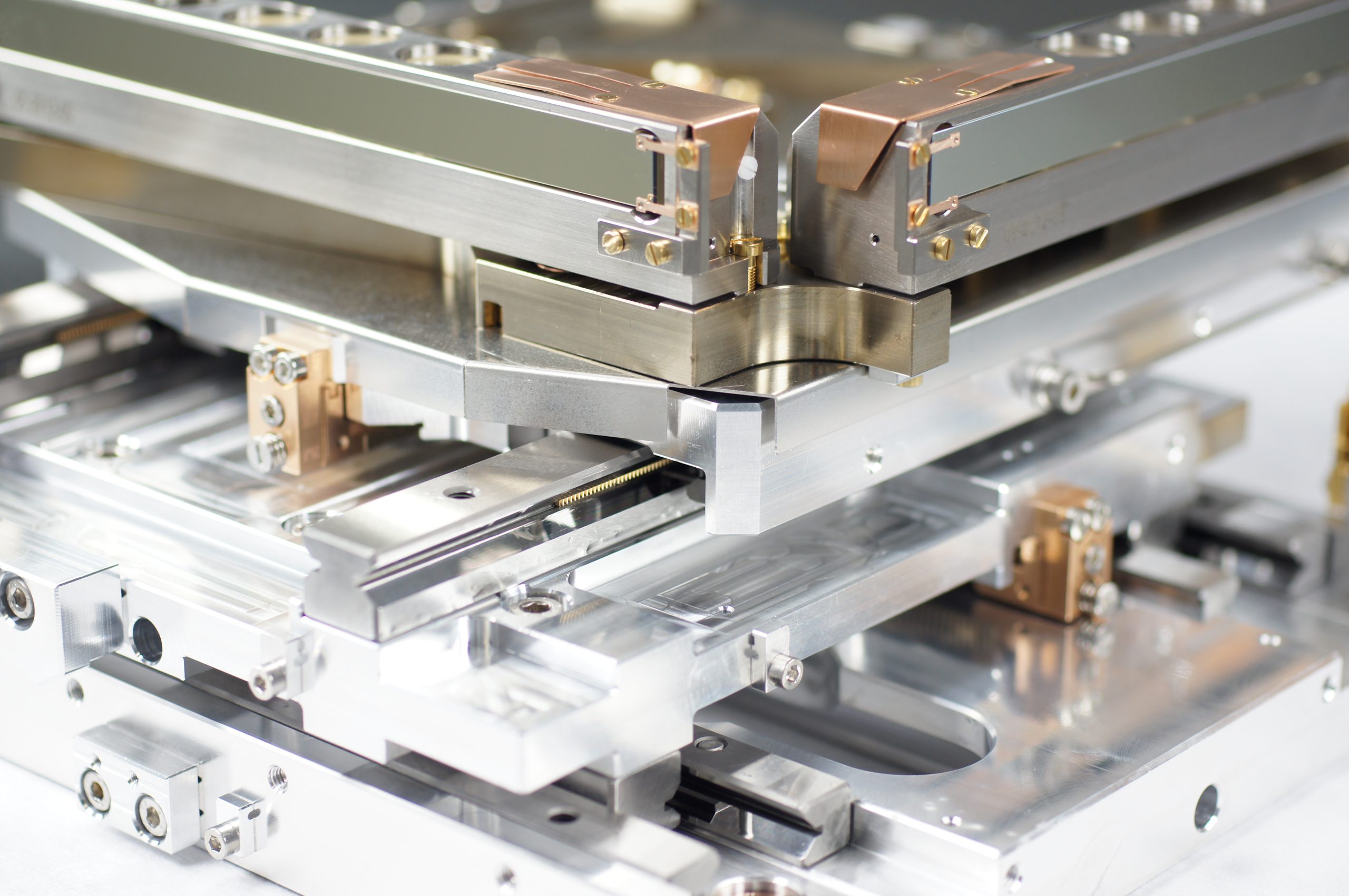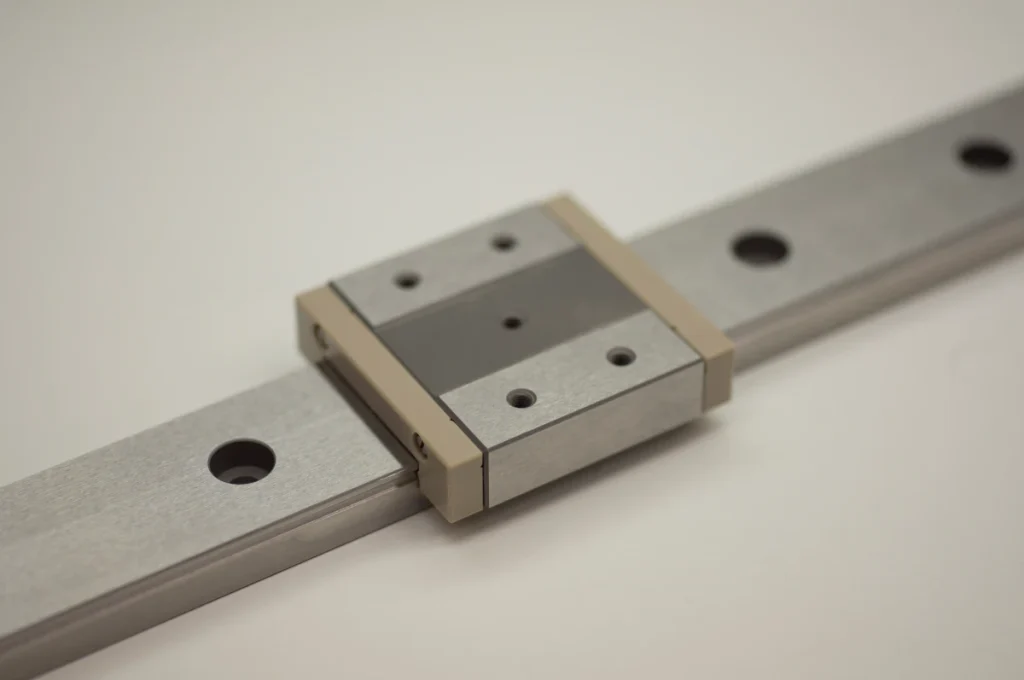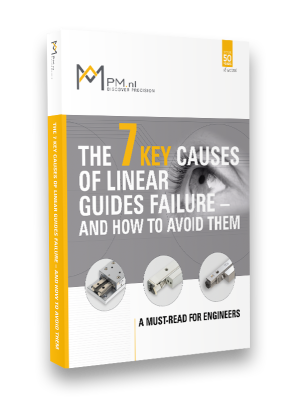
Linear guides, overview and applications of use
Linear guides…just two words but they include a wide range of linear motion bearing variations that are utilized across various industries to facilitate straight-line motion. The development of modern linear bearings dates back to the 1950s. Since then, manufacturers explored the opportunities with linear bearings and they developed numerous designs. The primary purpose of a linear guide is to provide support for loads with minimum friction while enabling linear or straight motion.
Home » Downloads » Learning center » Linear guides slide way
Table of contents
- The primary purpose of a linear guide
- Linear guides overview
- Important considerations for choosing a linear bearing guide
- Linear guides divided by category
- Recirculating linear guides for unlimited travel
- Non-recirculating linear guides for limited travel
- Linear guides with a cam roller
- Anti-friction linear guides/cross-roller guides
- A quick note on air bearings

The primary purpose of a linear guide?
The primary purpose of a linear guide is to provide support for loads with minimum friction while enabling linear or straight motion. There a various designs covering the need for low-cost solutions up to ultra-high precision linear motion with micrometer accuracy.
Return to the table of contents.

Linear guides overview
There a many different types of linear bearings available. These types can be differentiated by the nature of their surface interaction, i.e., whether it involves sliding or rolling. To provide a brief overview, some examples include:
- Plain bearings/dovetail bearings
- Recirculating ball bearings in housings on precision shafts
- Linear bearings with guide wheels/combined bearings
- Rounded shafts with track rollers
- Profiled rail guides with runner blocks
- Precision linear guides with flat cages/cross roller guides
- Hydrostatic linear bearings
- Air bearings
- Magnetic bearings
Return to the table of contents.
Important considerations for choosing a linear bearing of guide
When selecting a linear bearing, it is crucial to consider certain design factors. These are:
- Static and dynamic load capacity
- Amount of play
- Travel lengths
- Speed
- Accuracy/precision
- Stiffness
- Repeatability
- Operating temperature
- Boundary dimensions
- Ease of installation
- Cost price
But environmental conditions can also play a significant role in certain systems, such as outgassing in ultra-high vacuum systems. In order to achieve top performance, some applications require exceptional precision, smooth operation, and accuracy, which can be achieved through the use of cross-roller way or slide-way guides.
Linear guides are utilized in a wide range of applications, including material handling machines, factory automation, machine tools, packaging, microscopy, and inspection. These applications span across various industries, including material handling, food and packaging machinery, laboratory equipment, medical devices, machine tools, semiconductors, and life sciences.
Return to the table of contents.
Linear guides divided by category
Another method of dividing linear bearings into two categories is:
- Recirculating linear guides
- Non-recirculating linear guides
Recirculating linear guides for unlimited travel
Recirculating linear guides are comprised of a guide rail or guide shaft, upon which a block is mounted. This block contains raceways with rolling elements, such as balls or rollers. As the block moves, the rolling elements circulate by pushing each other forward with minimal friction. During this circulation, the rolling elements move in and out of the preload zone, which is the contact zone between the rail and the block. In theory, this offers an infinite stroke length.
Popular recirculating guides include ball-bushings linear guides and profiled linear guides with 2-row or multi-rows of rolling elements. These types are preloaded at the factory and cannot be adjusted after assembly.
Non-recirculating linear guides for limited travel
Non-recirculating linear guides are available in two main types:
- Linear guides where cam rollers are used for linear motion
- Anti-friction linear guides/crossed-roller linear bearings
Linear guides with cam roller
The first type uses cam rollers also called track rollers (mainly used in handling equipment where heavy loads must be moved, for example, palletizing and storage systems in logistics, lift systems for car bodies, or robot tracks. The travel is limited by the length of the guides also called profiles. The Cam rollers are rolling in a C-form profile.
Anti-friction linear guides/cross-roller guides
The second type of linear guide is low-friction and provides exceptionally smooth running performance with minimal friction resistance at high levels of precision, reaching down to the micrometer level. These compact linear guides are specifically designed for precision industries, providing accurate support and transportation of loads. Due to the use of cages to retain rolling elements, these guides have limited travel lengths, often less than 800mm. The guide rails feature precision-machined V-grooves to accommodate the rolling elements.
The guide rail raceways of these linear guides are meticulously finished through precision grinding. These variants are commonly known as linear ball guides, cross roller guides or slide way, and needle roller linear guides. The cross roller linear guide is predominantly utilized in the industry and is also employed in pre-assembled configurations such as cross roller linear slides and linear motion stages.
There a 3 groups of linear guides for limited travel:
- Linear guides with ball cages
- Linear guides with cross roller cages
- Linear guides with needle cages type
Precision linear guides with ball cages are four-point contact bearings that offer low friction resistance, smooth running, and the ability to support light loads. However, users often opt for cross roller cages for medium to high loads. These cylindrical rollers have line contact on the raceway. The stroke is limited by the lengths of the rails and cages.
These linear guides with ball or crossed roller cage assemblies find applications in various industries, including medical, pick-and-place assembly machines, life science, metrology, and semiconductor industries. The linear guides with needle roller cages are popular in the heavy machine tool industry to transport heavy loads with utmost precision, such as in the Z-axis of an EDM machine.
This link will take you to the product overview page for caged rail guides.
Return to the table of contents.

A quick note on air bearings
Air bearings are utilized in applications that require the utmost precision. Unlike traditional ball or crossed roller linear guides, an air-bearing system operates without any mechanical contact. This means that there is no play or friction between the interacting components of the drive system, resulting in a highly accurate and smooth operation.
These bearings are of the non-contact variety and are ideal for applications that demand extremely accurate and quiet operation. However, manufacturing this type of linear bearing is challenging and costly. The air required to lift the carriage off the guideway by approximately 0.01 mm must be filtered, and air pressure is necessary for operation. The advantages of air bearings include high speed and acceleration, as well as high positioning precision.
Air bearings have some potential disadvantages that should be considered. The design of air bearings can be quite complex due to the precision and engineering required. In addition, air bearings are more expensive compared to other bearing types, both to purchase and to operate. Another point to be aware of is the limited load capacity. Depending on the configuration, air bearings may not be able to carry the same load as other bearing types. This could result in limitations with heavier loads.
Return to the table of contents.
Short summary
The article provides a broad overview of linear guides, which are essential components for facilitating linear motion in various industries. Linear guides aim to support loads with minimal friction while enabling linear motion. The article covers different types of linear bearings, including plain bearings, recirculating ball bearings, linear bearings with guide wheels, rounded shafts, profiled rail guides, precision linear guides with cross roller guides, hydrostatic linear bearings, air bearings, and magnetic bearings.
Key considerations for choosing a linear bearing include static and dynamic load capacity, amount of play, travel lengths, speed, accuracy, stiffness, repeatability, operating temperature, boundary dimensions, ease of installation, and cost.
Linear guides find applications in many industries such as material handling machines, factory automation, machine tools, packaging, microscopy, and inspection and testing. The article categorizes linear guides into recirculating and non-recirculating types.
Recirculating linear guides allow for unlimited travel and include ball-bushings linear guides/shafts and profiled linear guides. Non-recirculating linear guides comprise linear guides with cam rollers for unlimited travel and anti-friction linear guides/crossed-roller linear bearings for limited travel. They come with cages and can be manually preloaded which makes them the ideal linear guides for use in high-precision equipment.
The linear guides with cam rollers are suitable for handling heavy loads with limited travel lengths. On the other hand, anti-friction linear guides, such as cross-roller guides, provide smooth running performance with minimal friction resistance at high precision.
A note on air bearings emphasizes their use in applications requiring utmost precision, operating without mechanical contact. Air bearings offer advantages such as high speed, acceleration, and positioning precision, but they are complex to design and costly. Limitations include a reduced load capacity and higher expenses compared to other bearing types.
WANT TO KNOW MORE ABOUT OUR PRODUCTS?
Functional Always active
Preferences
Statistics
Marketing
Your catalogue download was successful
Download your e-book
The e-book is written for engineers and includes tips and tricks for the installation of linear guides
- Design tips from experts
- How to avoid commonly made mistakes
- 7 quick wins which will save you money
- Considerations on lubrication
- Clear illustrations
- Special edition written for the engineer
